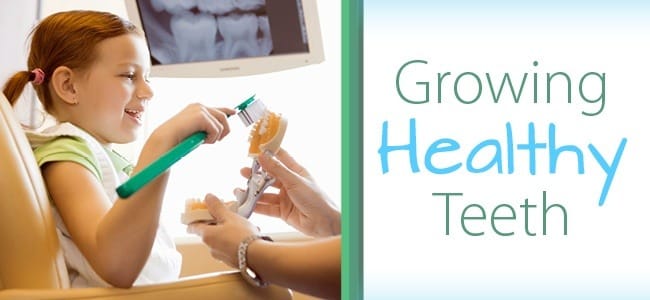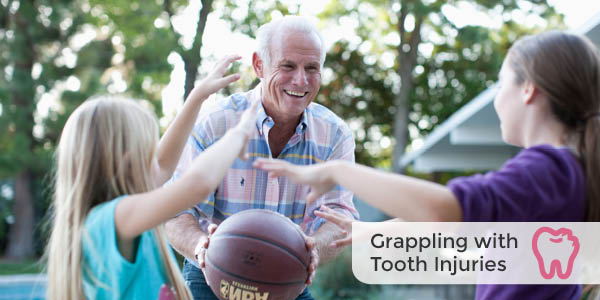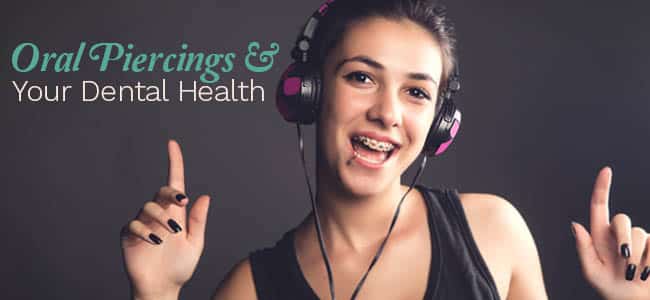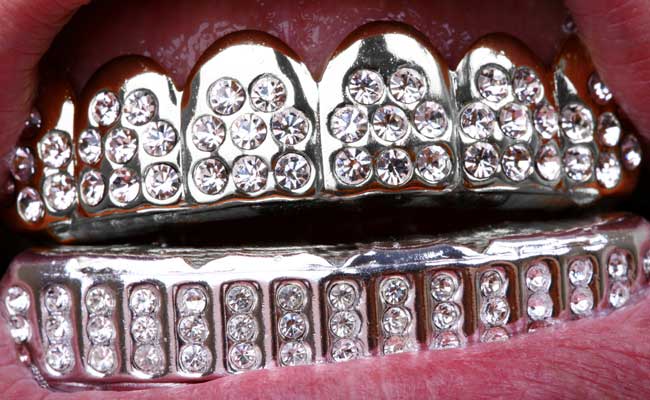The Ages & Stages of Your Child’s Dental Health

Few parents realize that their children are at risk for tooth decay from the moment the first tooth appears (around 6 months). Even though baby teeth are temporary, they are important; they serve as placeholders for adult teeth, and if they are lost too early, their adult replacements may grow in too early and affect the position of permanent teeth that come in later. Tooth decay and damage can also lead to issues with speech development that require therapy for correction later in life. Pediatric dental disease is the number-one chronic childhood illness, and it continues to plague children throughout the course of their development and into their adult years — but it doesn’t have to. Teaching children good dental habits at an early age and making sure they attend routine dental visits goes a long way toward helping them maintain a pain-free, healthy, and beautiful smile for a lifetime. The following information functions as a road map for understanding your children’s oral development and health throughout their ages and stages. Birth to 1 Year You should be caring for your baby’s teeth before they even appear. Infant toothbrushes come in a variety of sizes and shapes. Most are made out of a soft BPA-, lead- and phthalate-free silicone and have tiny bristles parents can use to gently brush gums after each feeding. Once your baby is old enough to sit and hold objects, there are similar brushes that resemble teething rings, which babies can hold and massage their own gums with. Your child should have his or her first dental exam by the time they are 1 year old. When Baby’s First Tooth Appears As soon as baby’s first tooth appears, you should begin brushing with the infant toothbrush and water twice a day. Sugars are detrimental to teeth, and too much can quickly lead to tooth decay. Try to limit your child’s juice intake to one cup a day. Also, be aware of your child’s sucking behaviors and habits. If your baby sucks his or her thumb, finger, or pacifier, now is a good time to start planning out how you will break the habit. Regular sucking can negatively affect your child’s bite. Your pediatrician will inspect your child’s teeth at each well-child exam and will refer you to a dentist should any concerns arise. You should consult with your pediatrician about fluoride, sealants, and additional ways you can support your child in the development of excellent oral hygiene habits. 2 to 5 Years By the time your child is 2 and a half, they should have all of their baby teeth. At the age of 2, your child is ready to start learning how to brush their own teeth two times a day. Soft-bristled, child-size toothbrushes are available and make reaching difficult spots easier for uncoordinated little hands. At this age, your child can use a pea-size amount of toothpaste with fluoride. Allow them to brush their own teeth for a couple of minutes, then finish by taking the brush and making sure every tooth has been gently scrubbed. Once you are finished, have your child spit the remaining toothpaste into the sink. Tips for Avoiding Toddler Tooth Decay Avoid sugary snacks and drinks. If your child needs milk or formula before bedtime, make sure to rinse their mouth out prior to laying them down. If your child requires a bottle at bedtime, fill it with water. 6 to 11 Years Your child will start losing their primary teeth around 6 years. They will continue to lose primary teeth and gain most of their permanent teeth until around the age of 13, when they should have 28 permanent teeth. Once the teeth start to touch, regular flossing becomes more important. Children often have trouble brushing the gumline or the back teeth, so parents will need to focus on these problem areas. Almost 90% of cavities in permanent molars occur in the grooves. Dental sealants, can help protect your child’s teeth by placing a thin coating over these high-risk areas. Dental injuries are very common during this period due to sports, 12 to 18 Years Most children have lost all of their baby teeth by the age of 12 or 13. If there is enough room, their final teeth — the wisdom teeth — will erupt around the age of 17. If your child’s dentist believes room is limited, he or she may recommend that the wisdom teeth be removed. Teens also tend to see more cavities than any other time of life. Most of the time this has to do with questionable diet choices and less than adequate oral hygiene practices. Children may also become more self-conscious if they have crooked or discolored teeth. Now that the permanent teeth are in place, it’s common to have conversations about teeth whitening and getting braces to straighten teeth. Orthodontia has come a long way, and treatments don’t have to take place late in life, nor do they take as long. With the right oral hygiene habits and the proper dental care, your child can have a beautiful, healthy smile well before they walk down the graduation aisle. A variety of dental issues may arise throughout the course of your child’s development. Regular dental visits will ensure that they are caught and dealt with early. For more information about how to care for your children’s teeth as they grow, call our Palmdale CA Dental Office today. We are here to ensure that your most precious family members enjoy a lifetime of beautiful, healthy, and happy smiles.
Oral Care in the Wilderness – Leave No Tooth Behind

Have you ever watched shows like Lost or movies like Cast Away and wonder how the teeth of these people must feel like after an extended stay on a remote island? Fortunately, there are a few things they (or you, if you go camping or get stranded) can do to help maintain a healthy smile when you don’t have access to a dentist or minty toothpaste. When you don’t have a toothbrush and floss, the concept of oral hygiene remains the same. Keep food debris from sticking around inside your mouth, and agitate the bacteria so plaque and tartar don’t develop. In a bind, you can use a clean cloth or part of your t-shirt. Put the cloth on your finger and rub your teeth and gums as you would with a toothbrush. This method is good for minor stays in the wilderness, but won’t provide optimal care in the long run. Use What’s Around You In the unfortunate situation you are without proper care for an indeterminate amount of time, you can find or adapt natural tools from your surroundings to clean your teeth. Chewing stick. Find a tree that has fibrous branches. Break off a toothbrush sized twig. Chew on one end to fray that part of the twig, which can now be used in lieu of an actual toothbrush. As strange as this may sound, a lot of cultures around the world still use chewing sticks for their dental hygiene. Due to the chemical composition of some trees (apple, fig, bamboo, and many more), they can help protect your teeth when chewed on. Small bones. If you are hunting for food, save some of the smaller bones. They can be used as toothpicks, removing food debris from between your teeth. Hair. This may seem gross, but if you didn’t bat an eye at small bones, you may as well try this trick too. If you have hair is long enough, you can use it as a substitute for floss. Water. Rinse with water (sterilized, if possible) to keep your mouth clean after brushing. Avoid problem foods. Without access to proper dental care, it’s best to avoid foods that can damage your teeth. Try not to eat fruits with a high acidity level, or foods that easily get stuck in your teeth. Now you know how Tom Hanks kept his smile going stuck on an island for three years. (And you thought it was Hollywood make up artists?) While these options may sound less than appealing, they could be the difference between having healthy or damaged teeth while out in the wilderness. That and no one likes the feeling of fuzzy teeth. If you’ve just returned from the wild, or if you’d just like to stay up to date on your dental visits, please don’t hesitate to give us a call!
7 Tooth-Saving Tips for Full-Contact Sports

From a solid hit on the football field to a stray left hook in an MMA fight the opportunity for severe dental injuries in full-contact sports is significant. Sports such as MMA, kickboxing, boxing, grappling, and wrestling are thrilling, and they provide excellent workouts and sustained confidence for people of all ages. And while most classes provide or require some form of protective gear, accidents can still happen. One of the most common causes of tooth loss is trauma caused by impact or unexpected contact with a hard surface. Breaking, chipping, and cracking that leads to a tooth needing to be removed can occur when engaging in sports that include partial or full-contact sparring. When trauma to a tooth occurs, there are things you can do to try to preserve the tooth and save it from loss. The following list is a guide for what to do when you are faced with an unexpected dental emergency. Knocked-Out Tooth: Rinse the tooth carefully, making sure not to wash away any remaining tissue. Attempt to place the tooth back in its socket carefully. If this is not possible, place it in a container of milk, or water with a pinch of table salt. Call your emergency dentist immediately. Your tooth has the best chance of being saved if you are seen within an hour of having it knocked out. Chipped, Cracked, and Broken Teeth: Gather and rinse all broken pieces of the tooth. Rinse your mouth with warm water and apply gauze if there is bleeding. Use a cold compress to relieve pain and swelling in the injured area, and contact your emergency dentist to be seen immediately. Fractured Tooth: Dentist can easily fix fractures with a composite restoration. A dentist should be seen within a couple days of the injury. Partially Dislodged Tooth: When a tooth gets pushed out of its proper position, it is important to manage the pain and get into your emergency dentist immediately. Apply a cold compress to the area and take a pain reliever such as acetaminophen or ibuprofen as needed. Lost or Broken Crown: Save your crown and set up an appointment with your emergency dentist right away. If possible, use over-the-counter dental cement to reattach the crown. If there is any pain, take an over-the-counter pain reliever such as ibuprofen or acetaminophen. Clove oil can also be used to soothe sensitive areas. Broken Braces: Orthodontic wax can be used to cover or temporarily reattach loose brackets and broken wires. If a broken wire is poking out and into your cheek or tongue, use the eraser end of a pencil to move it into a comfortable position, then cover it with wax, gauze, or cotton. See your orthodontist to have your braces repaired. Soft-Tissue Injuries: Tears, punctures, and lacerations to the soft tissues of the cheek, lips, or tongue should be cleaned and packed with gauze. A trip to the emergency room is necessary if stitches are needed. If you or your children are considering joining a full-contact sport, preparing for a dental emergency is key to preventing tooth loss. The following are a couple of items and information to have on hand: Dentist’s phone number and email address Small, portable container for dental emergency kit Saline solution Tissue Gauze Orthodontic wax Dental cement Compress Ibuprofen and/or acetaminophen Finally, one of the most important steps you can take toward protecting your smile in any sports-related activities is talking to your dentist about a mouthguard. According to the American Dental Association, sport mouthguards have been shown to reduce the risk of sport-related dental injuries. Having a dental provider fit you with one that is resilient, comfortable, and durable could mean the difference between keeping or losing your teeth in a sports-related incident. To find out more about mouthguards and protecting your teeth, call AV Sierra Dental Center in Palmdale, CA. We can help you get the right protective gear to keep your smile healthy white and free of missing teeth. Call today at 661.202.3542!
How do oral piercings affect oral health?

A Healthy Smile Is Your Best Accessory Body piercings have become increasingly prevalent over the past decade, and with more and more celebrities like Victoria Beckham, Tyrese, and Christina Aguilera sporting them, they are only gaining popularity among people of all ages. While piercings offer people the opportunity to express their individuality and add some extra bling to their personal style, some of the most popular piercings are located in the mouth area, which can be problematic. Do oral piercings damage teeth? Oral piercing can hurt your teeth and gums. It’s already easy enough to damage your teeth from day to day activities like chewing ice or trauma from sports. Complicate things with a piece of metal jewelry you just make it more likely to crack an incisor. In addition to an increased chance of injury an oral piercing can irritate your gums. Even without trauma having a stainless steel ball rubbing along your teeth can lead to enamel damage, scratches, and tooth sensitivity. If you’ve had any dental work done—including fillings or crowns—oral piercings can damage these as well, so if you don’t want to spend more money and time in the dental chair having your dental work repaired, we recommend choosing a non-oral piercing—if you’ve really got the urge to pierce something Popular face and mouth piercings include those in the tongue, lip, and cheek areas. The following are just some of the health risks and side effects associated with these piercings. Infection: Your mouth is home to a large number of bacteria that breed in moist environments. This is the perfect environment for an infection to occur. When an infection occurs in your mouth, it can become life threatening if not treated immediately. Excessive bleeding: On occasion a blood vessel gets punctured during the piercing process and results in prolonged bleeding. If not dealt with properly, severe blood loss can cause complications. Damaged gums and teeth: People with mouth piercings often develop the habit of playing with them, which may include biting and twirling them around the mouth. This can lead to scratched, cracked, and broken teeth and fillings. It can also damage the gum line. Allergic reactions: Sometimes people may unknowingly be hypersensitive to metals and can experience an allergic reaction. Nerve damage: Numbness at the site of the piercing is common. However, in some cases it remains a permanent condition due to nerve damage. Excessive saliva: Heavy salivation can result from wearing jewelry in your mouth. This can cause complications with your ability to chew and swallow correctly. It can also interfere with the pronunciation of words. If you do decide to get a face or mouth piercing, or if your child or adolescent has one, be prepared for four to six weeks of healing time. The following are some tips that will help you maintain your oral health should you decide to keep or get a mouth piercing: Make sure to keep the piercing site clean after you eat. Clear away any food particles by using mouthwash after each meal. Remove all jewelry when participating in sports, and ask the dentist about getting a mouthguard for protection. If you notice that you are developing habits that include biting or clicking your piercing against your teeth, stop immediately or consider removing the jewelry. If you think you may have an infection or might be developing an allergic reaction to the metal in your mouth jewelry, remove it immediately and call your doctor. The ADA advises against getting body modification to the mouth and considers these as invasive procedures with negative health benefits that outweigh the cosmetic effect on a person. How do you protect your teeth with oral piercings? If you already have piercings or decide that you want to get one there are ways to help protect and preserve your oral health. Keep the area clean – Be aware of food debris that can support harmful bacteria and pay extra attention to cleaning around the piercing or modification to prevent infection. Avoid rubbing your jewelry on your teeth – by preventing the metal parts of the jewelry from common in contact with your teeth you can prevent enamel damage. You should also pay attention the jewelry while speaking and eating to prevent accidents. Be extra mindful of oral hygiene – Brush your teeth twice each day, floss, use an oral rinse around the piercing and visit your dentist every six months to ensure that the piercing isn’t causing damage. Choosing to get a facial or oral piercing is an aesthetic decision that impacts your oral and whole health. Your at-home oral hygiene routine will be more important than ever should you choose to get one, as will your routine visits to the dentist and your dental cleanings. Make sure to let our provider know if you have an oral or mouth piercing so that he can help create a dental plan that will protect and maintain your best oral health. To find out more about mouth piercings, your oral health, and how we can help protect your teeth and gums, give your Palmdale dentist a call at 661.202.3542 today.
A Brief History of Grills

A Brief History of “Grills” Grills (or grillz) are, if not popular, at least fairly recognizable these days. Made of precious metals (gold and platinum being the most common) and often studded with diamonds, most grills are removable and worn over the front teeth. But where do they come from? Although many people would point to Nelly and his 2005 song, “Grillz,” as the starting point for the trend, they’re actually much older than that. (And no, we’re not just talking about rappers like Slick Rick, Flavor Flav, and Big Daddy Kane from the 80s and 90s, either). We’re talking ancient history. In ancient Italy, between 800 and 200 BC, wealthy Etruscan women wore teeth woven together with gold wire the thickness of a rubber band. The wire held together teeth that had been removed and were placed back into the mouth, so they made eating difficult. The practice wasn’t necessarily common, but archaeologists found documentation of around 20 sets of teeth woven together in this way. Etruscan civilization vanished as the Romans took over Italy, and this fashion trend died with it. In Latin America, Mayans actually cut small holes into their teeth and filled them with precious stones, typically jade. Again, this was a trend that only royalty and the wealthy could afford. Although the Mayan civilization has disappeared, many people in southeastern Mexico, Belize, Honduras, and Guatemala still wear gold tooth jewelry today. In ancient Filipino myths, the creator of the world, a deity named Melu, had gold teeth—and during what was the Middle Ages in Europe, Filipinos were filing down their teeth and decorating them with gold. Some of these decorations included gold bands that covered the entire front row of teeth; the oldest date to around 1300 AD. As the Renaissance began in Europe, dentistry was becoming more scientific and less superstitious—and Giovanni de Arcoli, a 15th century Italian professor of medicine, became the first author known to recommend filling cavities with gold to preserve them. Grills started appearing in rap and hip hop videos in the 80s, and became even more popular as Southern rap began to take off in the 90s and early 2000s. And now, they’ve jumped into mainstream culture, as celebrities like Madonna, Miley Cyrus, Katy Perry, and even Ryan Lochte have sported them in recent years. You might expect a dentist to come out against grillz as a health hazard, but no studies have proven that they’re bad for your teeth. As long as they’re removed and the teeth are brushed and flossed as appropriate, they shouldn’t cause health problems. Some metals can cause irritation; if it causes a rash, or bleeding, or other problems, just stop. Similarly, don’t clean them with anything toxic to ingest (like most jewelry cleaners), and don’t try to attach them permanently to your teeth with glue. But if you want to wear a grill, and you use some common sense and take care of your teeth, you’ll be part of a long tradition of dental jewelry. We can’t recommend a jeweler to create your grill, but if you have any questions about dental instruments—either ornamental or for health reasons—please give us a call at 661.202.3542 and we’ll be happy to answer your questions.
